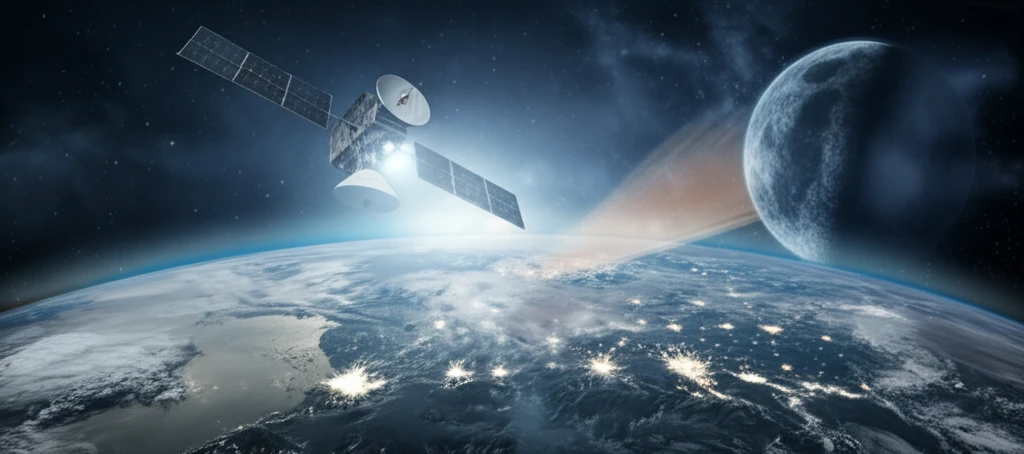
Unlock the Secrets of the Moon: How Lunar Measurements are Changing Climate Science
"Discover how cutting-edge lunar spectral irradiance measurements are revolutionizing climate data and paving the way for more accurate satellite calibrations."
For decades, the Sun and bright stars have been our go-to celestial benchmarks. Yet, Earth’s closest cosmic neighbor, the Moon, has lagged behind in terms of precise radiometric study. Previous lunar spectral irradiance scales have uncertainties between 5% and 10%. Such uncertainties limit the Moon's usefulness as a reliable calibration standard for climate science.
Driven by the need to ensure consistent climate data records despite gaps in satellite coverage, scientists have pioneered a new method to measure lunar spectral irradiance at visible wavelengths. This innovative approach promises to refine the Moon's role in climate monitoring, offering a stable, space-based reference point.
Recent advancements have yielded lunar spectral irradiance measurements with an uncertainty below 1% from 420 nm to 1000 nm. This leap in accuracy meets the stringent stability requirements of many climate data records derived from satellite imagery, opening the door to using the Moon as a calibration standard. This also offers the potential to bridge gaps in satellite coverage and validate atmospheric retrieval algorithms with unprecedented precision.
Why Lunar Spectral Irradiance Matters for Climate Data

Climate data records rely on the consistency of satellite images. Satellites monitor critical climate indicators, including vegetation, snow and ice albedo, clouds, and aerosols. The recent loss of key satellites and the delays in launching replacements highlight the urgent need to maintain data continuity. To truly understand climate variability and change, scientists must compare data across long time periods, bridging any gaps caused by satellite downtime.
- Calibration Standard: The moon may act as a universal calibration standard for Earth-orbiting satellites.
- Atmospheric Independent: The moon is above the atmosphere, this avoids challenges associated with atmospheric correction.
- Consistent Reference: As the moon is available to all Earth-orbiting satellites throughout their lifetimes it may allow for better comparison over time.
The Future of Lunar Calibration
The improved measurement of lunar spectral irradiance marks a crucial step forward in climate science. With continued refinements and long-term measurement programs, lunar calibration promises to enhance the accuracy and consistency of climate data, bridging gaps in satellite coverage and validating atmospheric models. This paves the way for a more comprehensive understanding of Earth's changing climate and more informed environmental stewardship.
